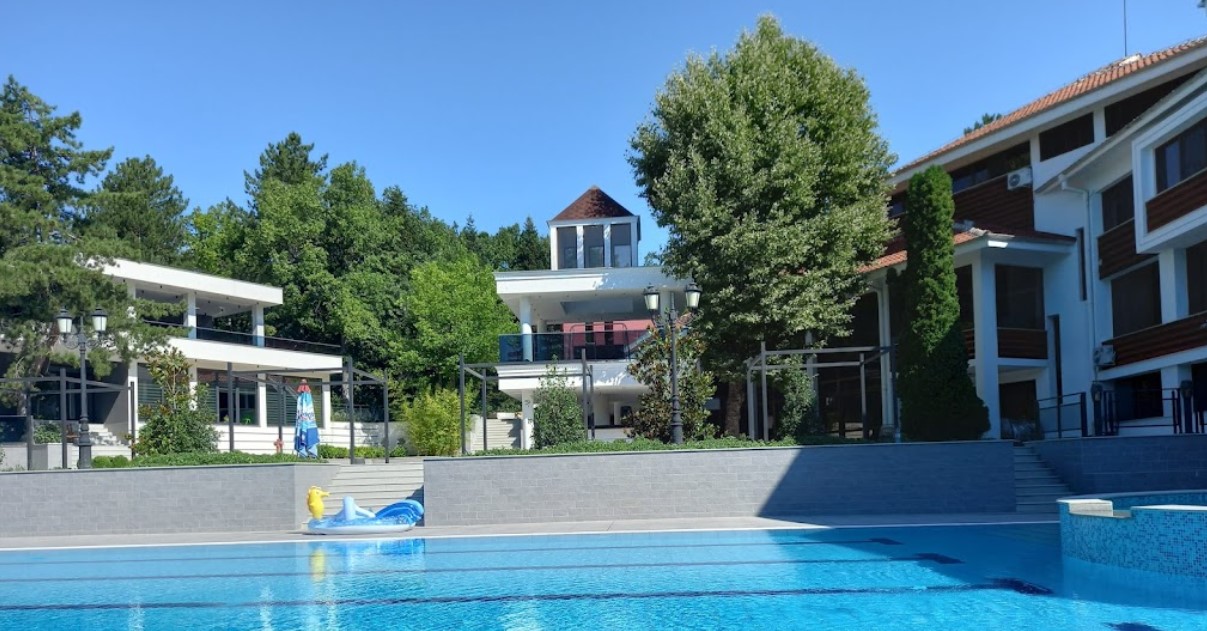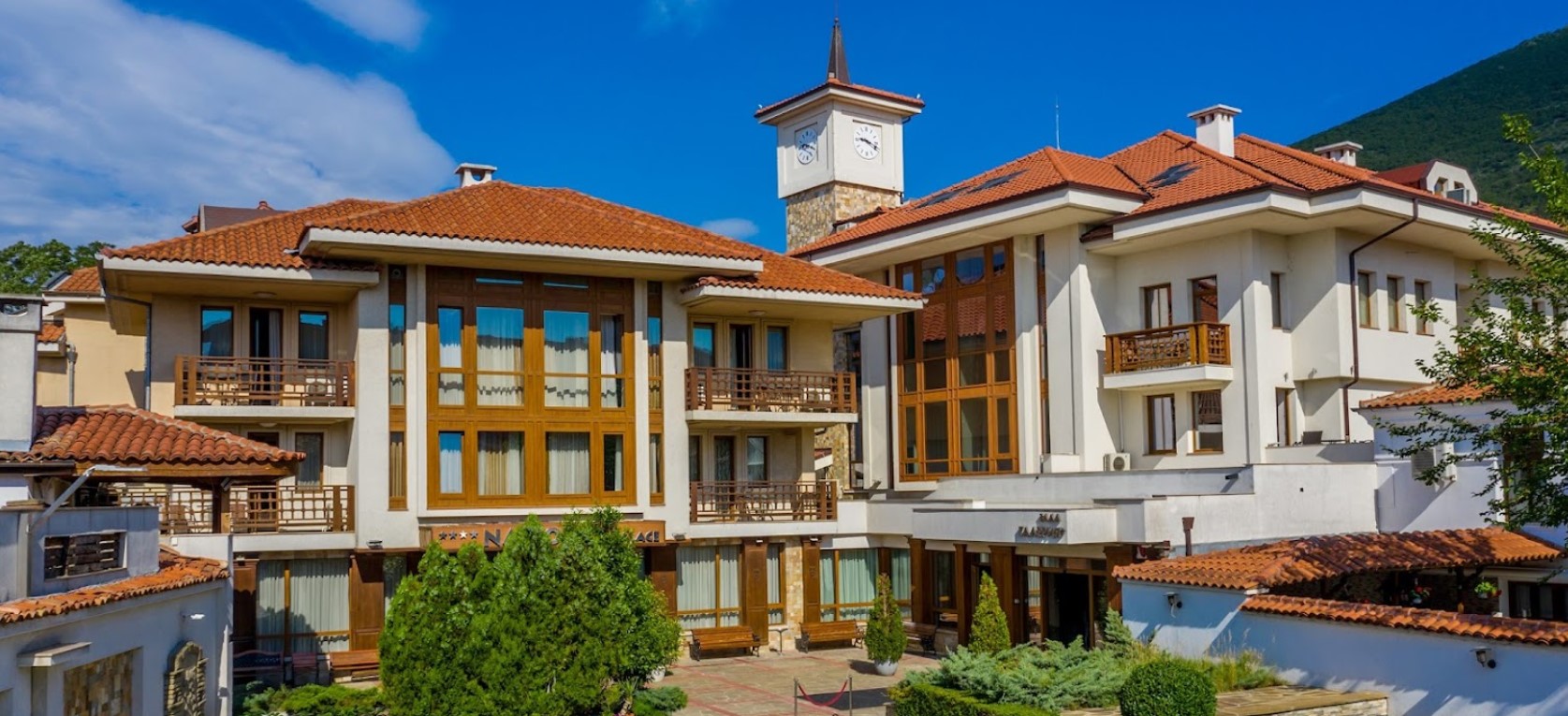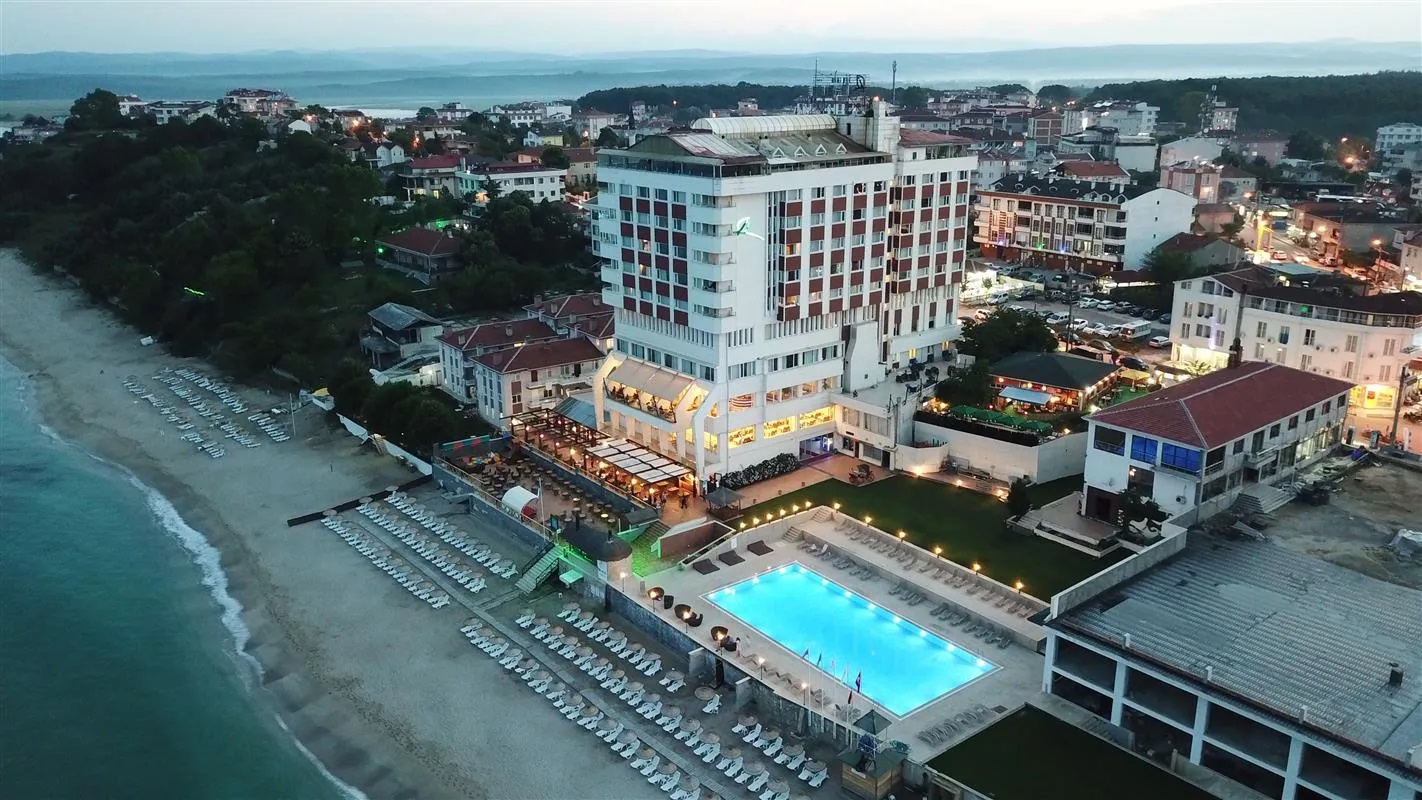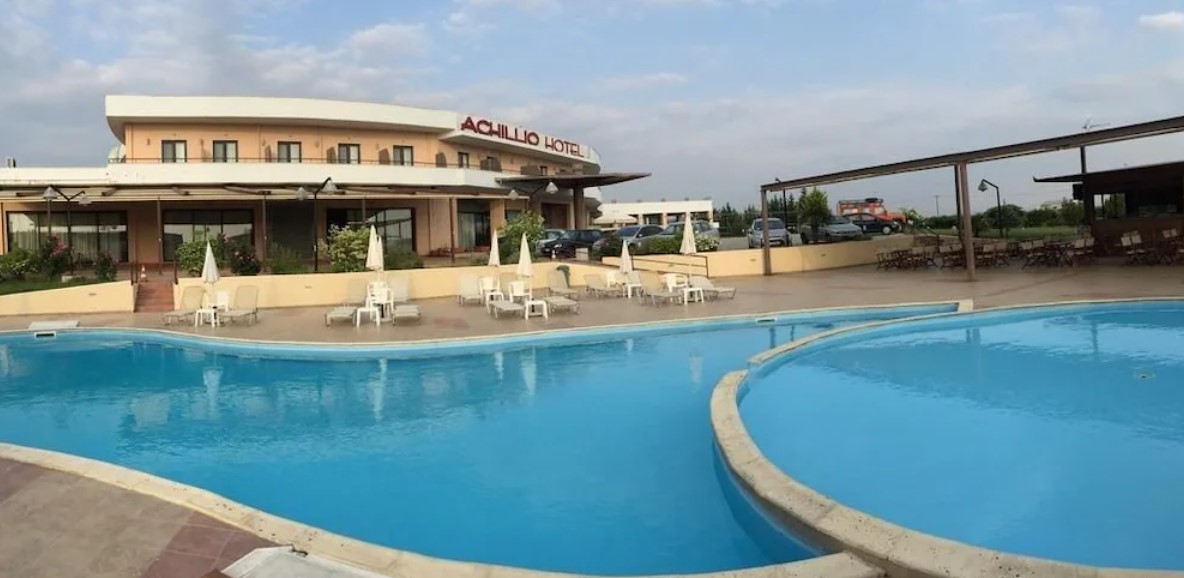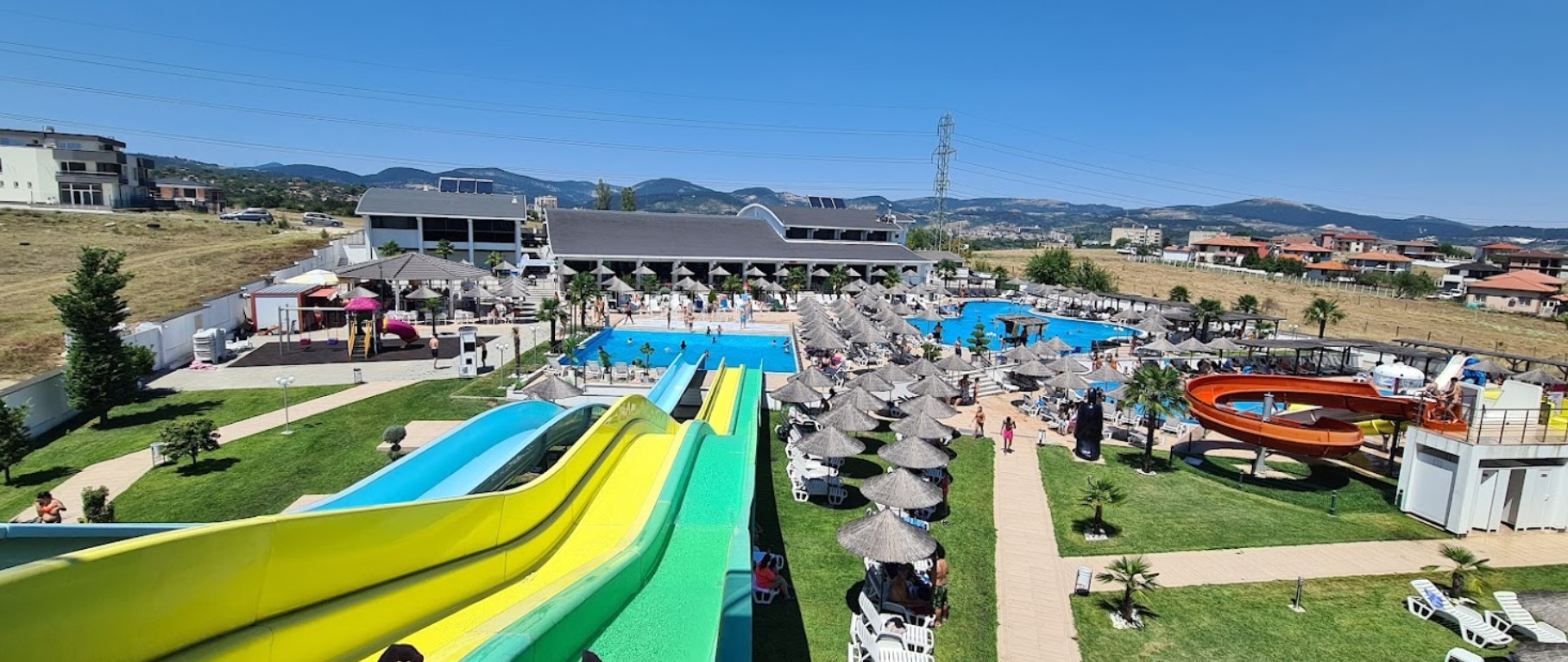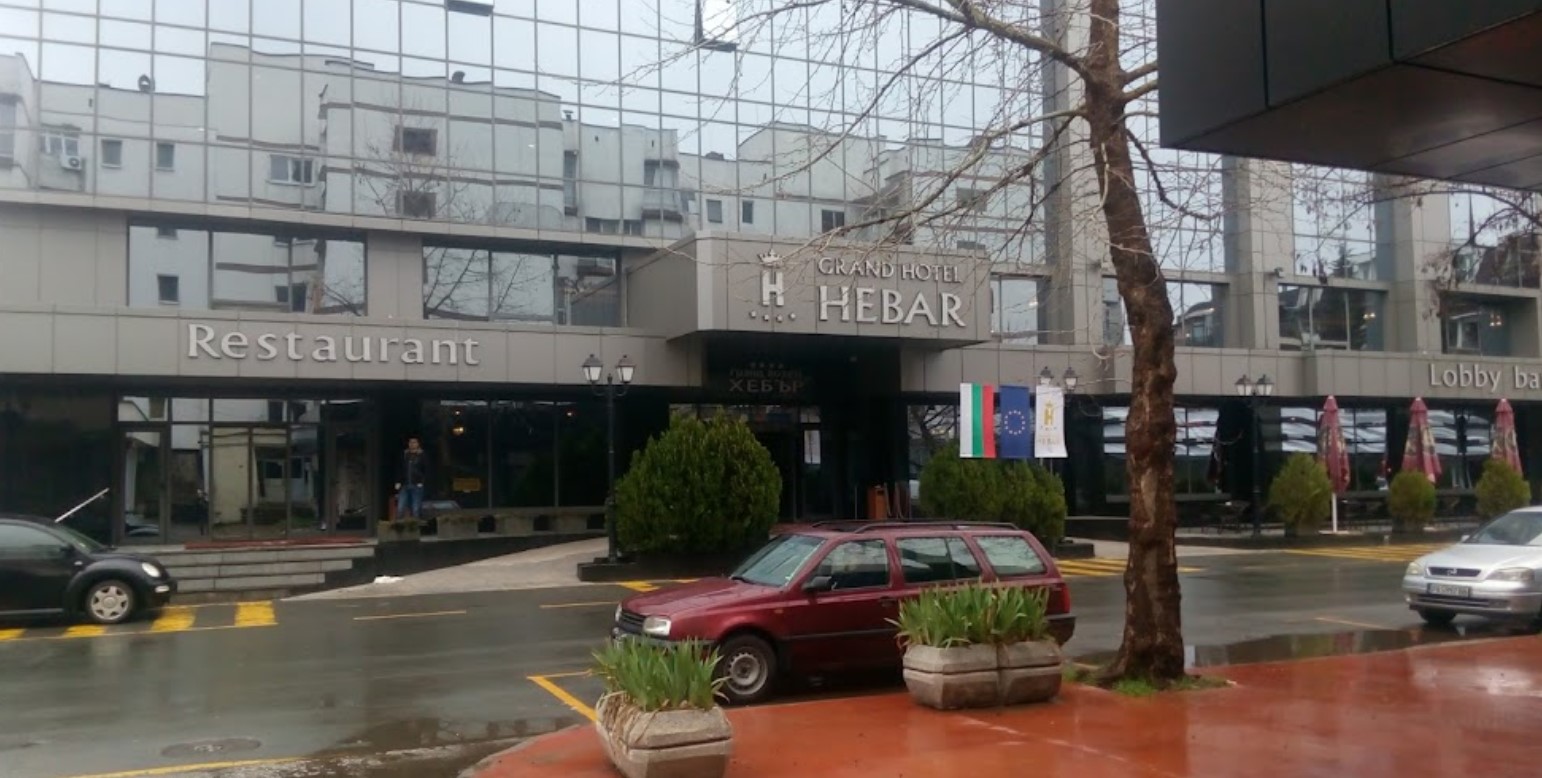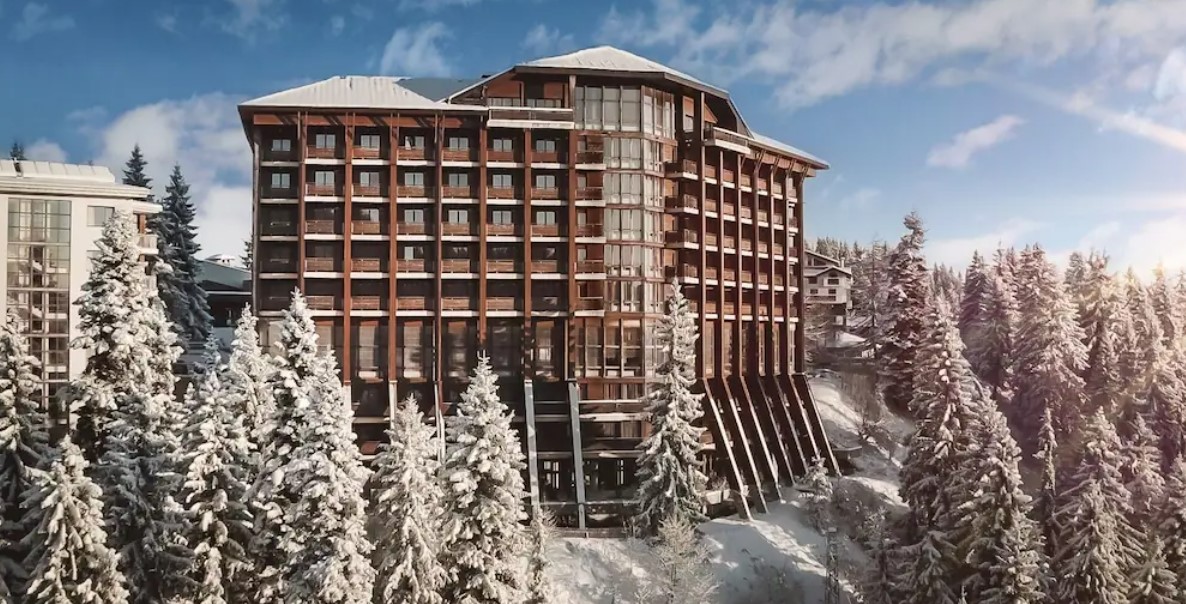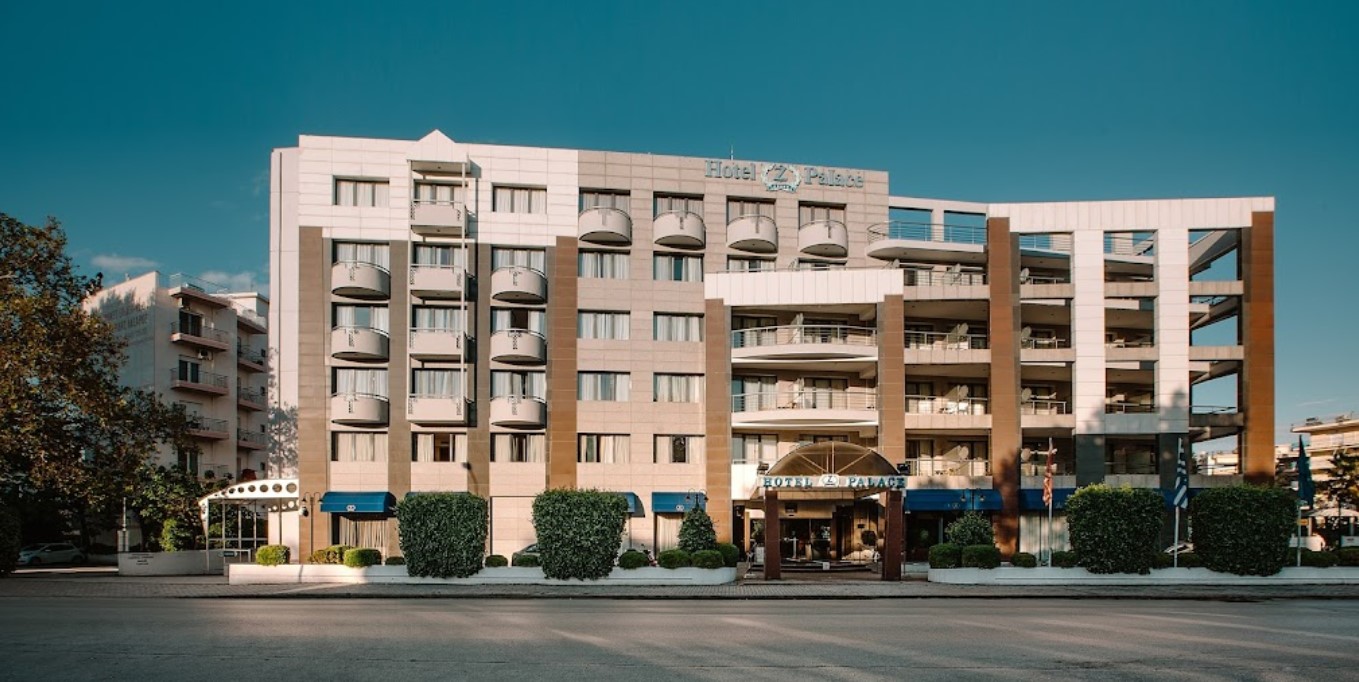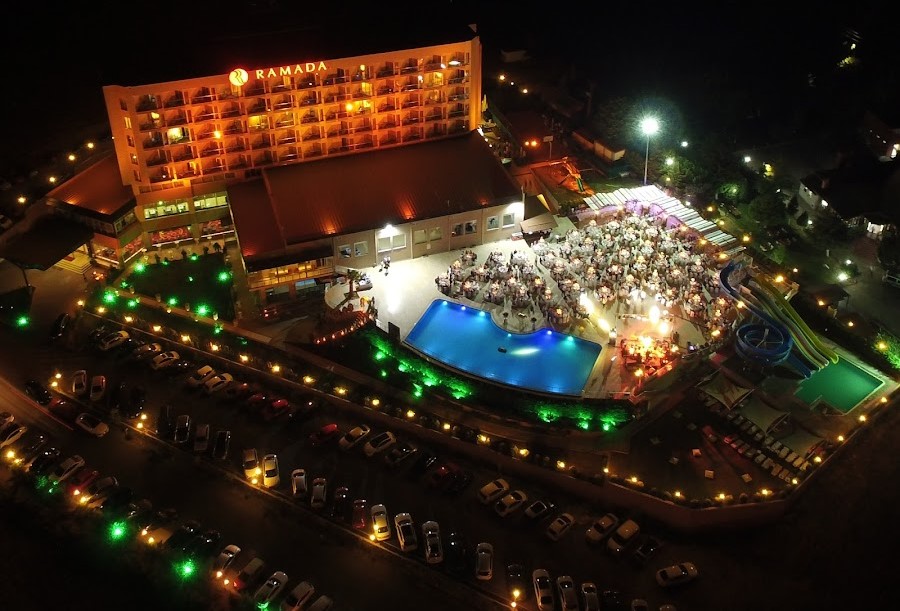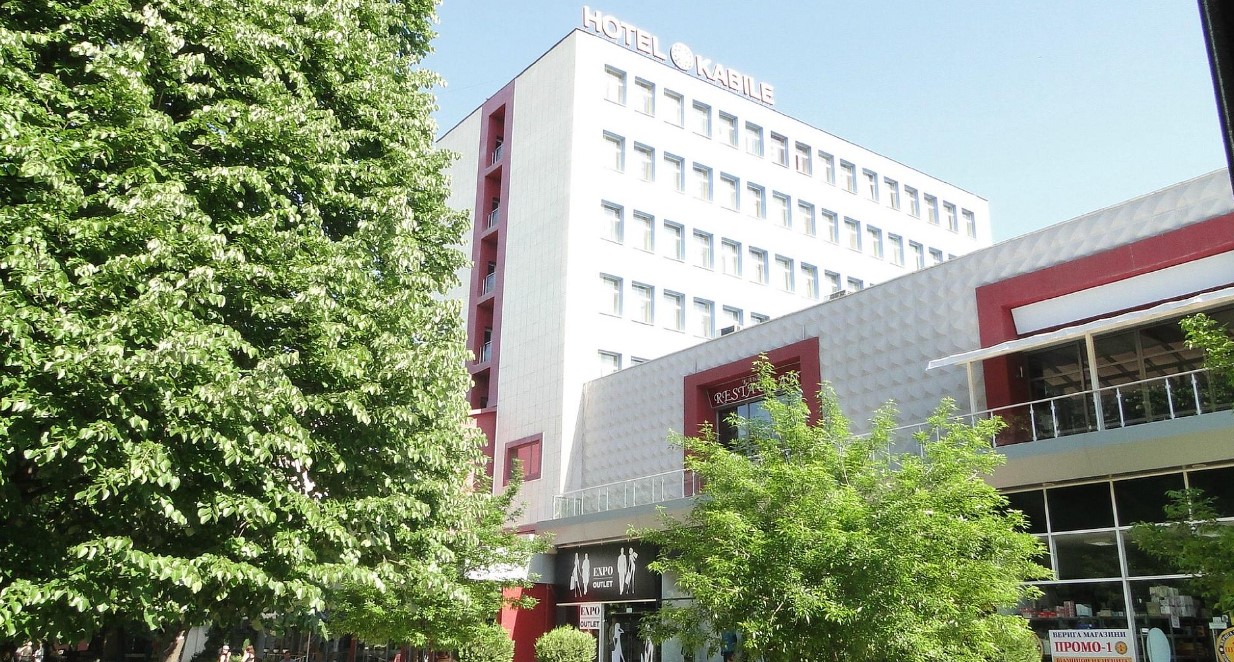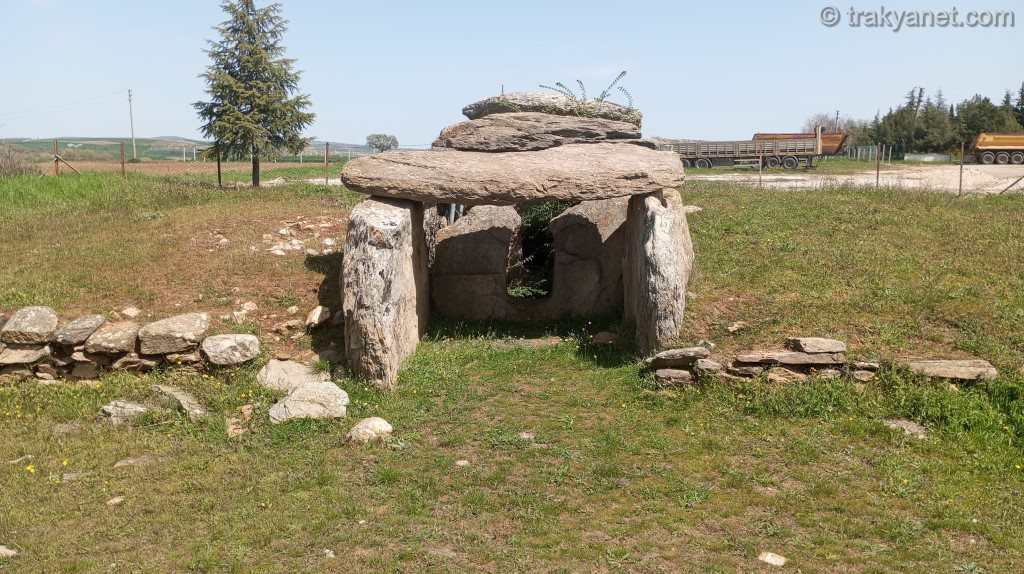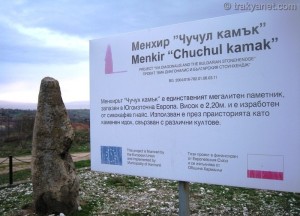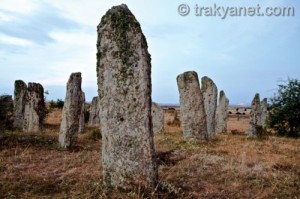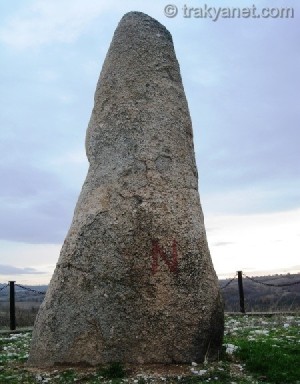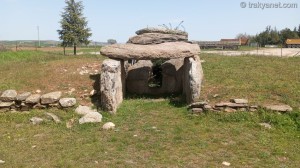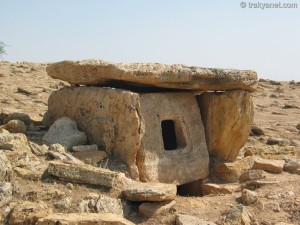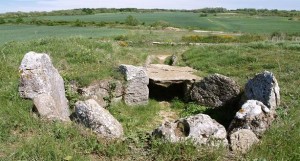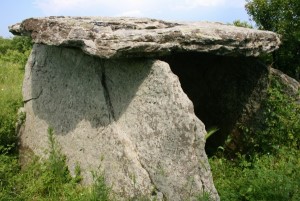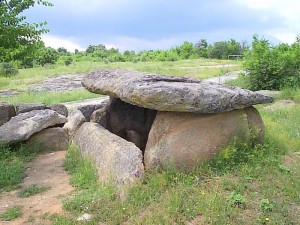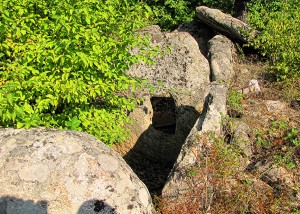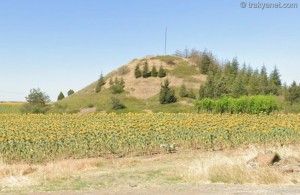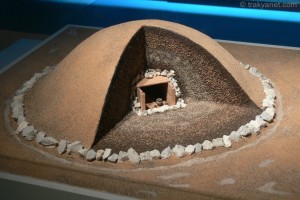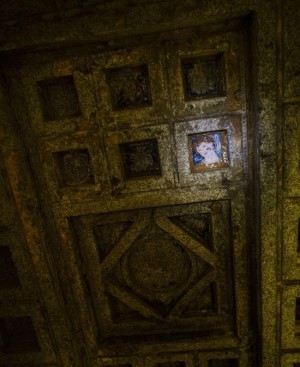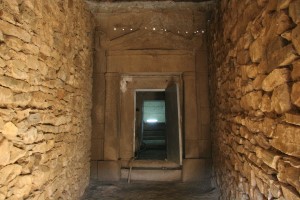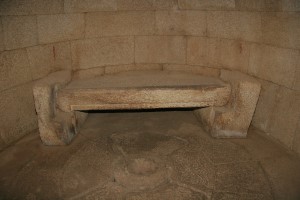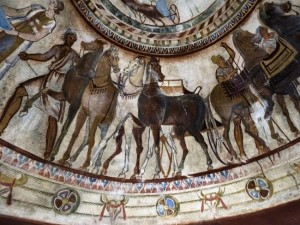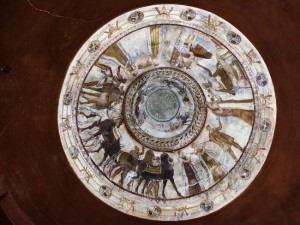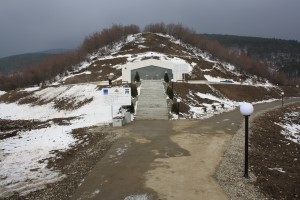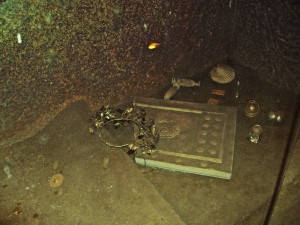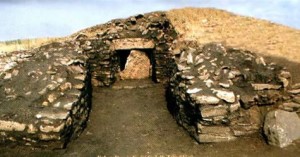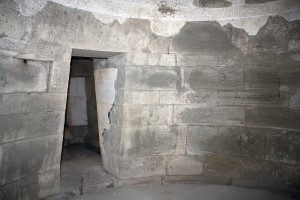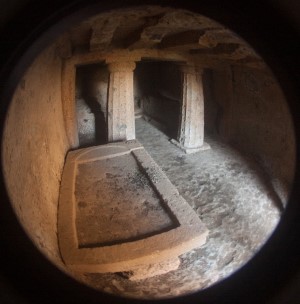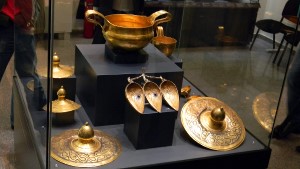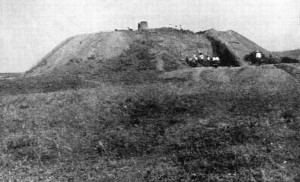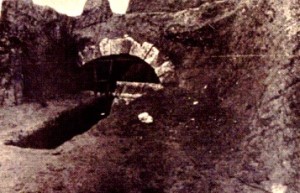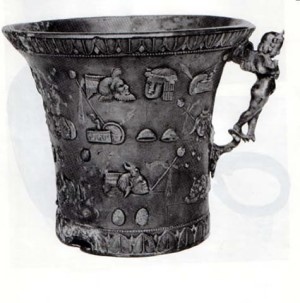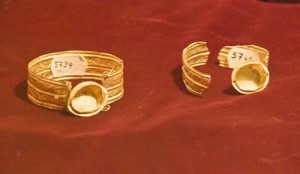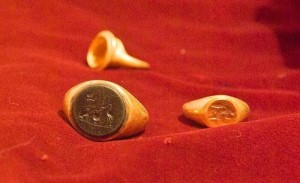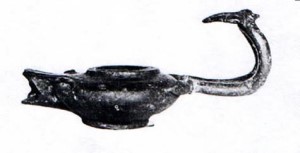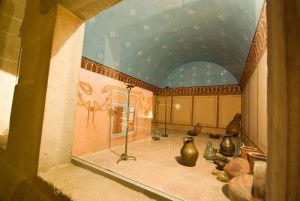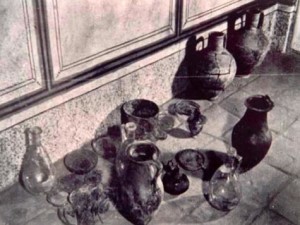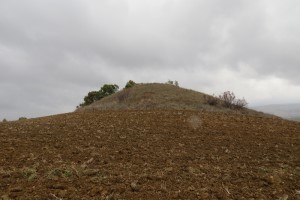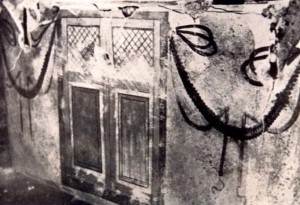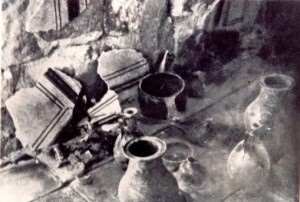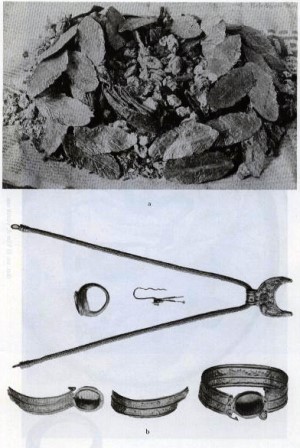Obelisks (Menhirs)
Obelisks are large stones, sometimes exceeding 4 meters above ground level. They can be found singly or in groups, and were sometimes placed around dolmens and sometimes burial mounds. Because they are locally believed to be "martyrs' graves," they are often found in Islamic cemeteries today, often intermingled with other gravestones. While detailed studies of the obelisks have not yet been conducted, it appears that at least some of them formed rows along specific orientations.
Menhirs are found in Thrace, as well as in France and England. These are giant stones, 10-12 meters high. Many menhirs have been proven to be gravestones. Due to their size, they have become the subject of folk tales as if they were alive. In related legends, menhirs are born, grow, dance, and weep. Some menhirs perpetuate a historical memory. They may also have been used to mark territorial boundaries. The most plausible explanation for the erection of menhirs is that they were primitive idols, or religious symbols. Generally standing alone, menhirs may have sometimes been arranged in a line. Those arranged in a circle may have been religious monuments or sacrificial altars. Because these rows, called cromlechs, are oriented according to the stars, they may also have been sun temples. (Istranca Mountains, between Mahyadağ and Dupnisa Cave)
Megaliths can be divided into two main groups: Stones that stand without any support; when they are alone, they are called "Menhir", and when they are arranged in a line or in a circle, they are called "Cromlech".
Chambers constructed from stones supporting a parallel pavement are called "dolmens." Dolmens are burial chambers. If these burial chambers are covered with soil, the resulting mounds are called tumulus mounds. Dolmens come in various types, including simple dolmens, covered corridors, and domed dolmens.
Dolmens (Monumental Tombs-Kapaklıkayalar)
Among the prehistoric monuments in Thrace, the most visually striking and interesting are undoubtedly the megalithic monuments constructed from large stone blocks in the form of slabs. There are two types of megalithic monuments in Thrace: passage tombs (dolmens) and obelisks (menhirs). These monuments, which have a striking distribution throughout Eurasia, have a highly controversial dating and interrelationship. Megalithic monuments are found in the Istranca Mountains of Edirne-Kırklareli, northern Thrace. These monuments, known locally as "kapaklıkaya," are constructed by covering large stone blocks placed upright with the same type of stone. They have a rear chamber, a central chamber, and a front entrance. The stone covering the front of each chamber also has an opening known as a "soul hole." Today, most of these monuments are unearthed, and it is known that many of them had a perimeter wall and a mound of stones on top. The monuments used as tombs began to be built in the 12th century BC, with some surviving into the 7th century with a second use. The pottery found with the megaliths consists of dark-colored vessels with cord-print or grooved decorations. A small number of metal tools and jewelry were also found.
Dolmens show various shapes:- Simple Dolmen: Consists of a large stone lying on top of two or more standing stones. This primitive dolmen is sometimes covered by a tumulus.
- Domed Dolmen: This type of dolmen features a dome covered with mortarless stones and capped with a keystone. This type of construction, called "tholos" in Greece, is still found among shepherd's huts in France and Ireland today.
- Covered Corridor: All late-era dolmens are of this type. The entire monument consists of a covered passage. Some sections of this are separated by perforated stone, and some have reliefs (Relief is a type of sculpture. If the projections of a figure are deeply embedded in the ground, it is called "high relief"; if the projections are faintly defined, it is called "low relief").
Tumuli and Burial Mounds
Thrace's most visually striking monuments are tumuli. A complete inventory of the tumuli, which adorn and enliven the monotonous landscape of Thrace, has not been compiled. While any elevation built over a tomb is generally called a tumulus, there is a wide variety of burial mounds, varying depending on the period in which they were built, the shape and characteristics of the mound and burial chamber, and the burial method of the deceased.
The first known examples of the tradition of marking a grave with a mound date back to the early 4th millennium BC, on the Eurasian steppes. Beneath these mounds, also known as kurgans, the deceased was placed in a simple pit or wooden chamber. This tradition is known to have first entered Thrace in the 3rd millennium BC, influenced by the steppes. Thrace's Bronze Age burial mounds are more flat and shallow than later tumuli, often 2-3 meters high. However, in Bulgaria, rare mounds reaching heights of up to 7 meters are found. Because the mounds are filled with stone, not soil, we refer to them as "Taşlıtepe" (Stone Hill). In these mounds, the deceased was buried in a pit beneath the mound, often lying long. Individual graves are also found on various sections of the mound. Taşlıtepe can be single mounds or, like tumulus cemeteries, can form clusters of up to 30 individuals.
From the Early Iron Age onward, burial mounds assumed a more pointed and conical shape, and clay soil was used in their fillings alongside stone. Burial mounds dating to the early Iron Age again lacked a separate burial chamber; the dead were laid in a chamber dug into the ground and lined with wood. True tumuli with burial chambers or stone sarcophagi began to appear from the Middle Iron Age onward. Ridges and slopes visible from a distance were generally preferred for such tumuli. While double or triple tumuli are common, groups ranging in number from nine to thirty-six are also encountered, often forming tumulus cemeteries. Collective tumulus cemeteries appear to have been located over an older sacred site.
Definition and function of the tumulus
The information in this section belongs mainly to Assoc. Prof. Dr. Engin Beksaç and is taken from his article titled "Thraces and Visa".
Among the numerous archaeological artifacts scattered around Vize, which holds a significant place in Thracian history, the numerous tumuli scattered across the Vize plain are particularly noteworthy. Some of these were examined by Prof. Dr. Arif Müfit Mansel, personally commissioned by Atatürk to research the history of Thrace between 1936 and 1939. Some were robbed in various ways and destroyed, leaving nothing scientifically significant. Tumuli exist in locations other than those on the plain within the borders of Vize. Naturally, among these, there are some that await scientific investigation. Not all tumuli contain burial chambers, and some show traces of cremation and horse bones. These tumuli, known as horse graves, are extensions of ceremonial and sacrificial sites related to the Thracian Orphic religion.
The horse, a sacred offering, played a significant role in rituals designed to support the powers of the universe and serve rebirth, along with burning ceremonies, rituals of purification. Indeed, the tumuli themselves, as part of Orphic ceremonies and beliefs, were the earthly symbol of the Chthonic worldview. It is likely that the cave churches used in the Byzantine period in the valley north of Vize (asmakayalar) also originated in the Thracians and were related to Orphic burial traditions and rites. Furthermore, megalithic monuments found in various parts of Thrace are also related to these Orphic rites and are notable as altars where Thracian priests, who loved high places, performed ritual human and animal sacrifices. Such monuments are found in Vize Karakoçak, Soğucak, and Kıyıköy. Along with these megalithic monuments, caves are among the most important elements of Orphic religion. While it is known that the sacrifices were generally horses and women, it is understood that men were also sacrificed (Herodotus). Cenotaph burials, seen as empty tombs, are related to these sacrificial rituals and are an extension of the Orphic Zagreus cult. Finally, fire and burning are fundamental to the Thracian Orphic thought and an important means of purification. Among these religious traces of the Thracians living in Vize, Çömlektepe and Karakoçak (Thamata) are particularly noteworthy as Thracian cult centers.
Research on the Visa Tumulus
The Vize Plain, which extends north of the Ergene River along the northern foothills of the Istranca (Yıldız) Mountains and covers a wide area, is of greater importance than other parts of Eastern Thrace in terms of both its high water potential and the wealth of other natural resources. Despite this importance, archaeological research in the region has been extremely limited until recently. The scientific examination of the prehistoric finds in the Vize Plain was conducted in 1982 by Prof. Dr. M. Özdoğan, a faculty member in the Prehistory Department of Istanbul University, during his surveys in Thrace and Eastern Marmara, which include this region. Prior to this date, Ordinaryus Prof. Dr. Arif Müfit Mansel excavated a series of tumuli in the plain between 1936 and 1939 and drilled a sondage at Çömlektepe Mound, which constituted the main Thracian center in Vize.
In 1962, F. Dirimtekin conducted research in and around Vize and identified a rock outcrop in the Karaköçek area near Vize as a Thracian rock altar. In 1982, M. Özdoğan discovered the monuments known as Mali Petra in Sergen. Later, in a scientific study conducted by Engin Beksaç and Kırklareli Museum officials, the rock outcrop known as Gemikaya in Soğucak village was identified as a Thracian rock altar. A rescue excavation was also conducted at a tumulus in Çakıllı by Engin Beksaç and Zülküf Yılmaz.
Istanbul University's Department of Prehistory has conducted research to determine whether settlements in Vize and its surrounding area date back to the 1st millennium BC. Numerous prehistoric settlements have been discovered, revealing the cultural heritage of the Vize Plain. According to Özdoğan, the pottery recovered from the settlements in the Vize Plain is closely related to Balkan cultures. The first enlightened period in Vize's history dates to the Eastern Thrace period. Archaeological excavations also confirm this. The mounds excavated during the 1398 excavations and the artifacts found within them belong to the Thracians.
Tumuli Researched in Vize
The information in this section was mainly taken from Prof. Dr. Somay Onurkan's work titled "Mineral Artifacts of Eastern Thrace Tumuli."
Tumulus A
The discovery of Vize A tumulus holds a significant place among Thracian tumuli. Its systematic investigation, dating, and evaluation make it a landmark among Thracian tumuli. This tumulus is the tomb of the Thracian King Rhoimetalkes III, who was assassinated in 45 AD. Therefore, Vize, as this tumulus demonstrates, was the last capital of the Thracians outside of Dacia.
In 6 and 7 AD, Rhoimetalkes I and Rhaskuporis were vassal kings of Thrace. When Rhoimetalkes I died, his son Kotys was given the rich southern Thrace. Rhaskuporis, who inherited the poorer northern Thrace, deceived Kotys. Rome warned Rhaskuporis to release Kotys, but he refused and killed him. He was exiled to Alexandria, where he died. Rhaskuporis's lands passed to his son Rhoimetalkes II. Kotys's lands were inherited by his minor children Rhoimetalkes III, Kotys II, and Polemo. Trebellienus Rufus was appointed as their guardian. Kotys's son Rhoimetalkes III appears to have been King of Thrace in 37 and 38 AD. Rhoimetalkes III was murdered by his wife in 45 AD. Thus, the Southern Thrace State under Roman rule ended , and in 46, during the reign of Emperor Claudius, Thrace became a Roman province. The capital of this province was again Vize.
Vize A Tumulus is the most important Thracian ruin in Turkish Thrace. It is 9.50 meters high and 50 meters in diameter. It has a tomb chamber oriented east-west. The tomb plan: The walls of the rectangular tomb chamber, 4.62 meters long and 3.12 meters wide, were constructed of local limestone laid in horizontal rows without mortar and were covered with a vault after a height of 1.18 meters. The chamber is 2.74 meters high. The floor of the chamber is covered with thick rectangular bricks. The walls are decorated with frescoes. Below, on a pedestal resembling alabaster, there are panels with white surfaces framed in red, yellow, and black. Above, it is bordered by a frieze of floral and geometric motifs. The vault depicts the sky with white stars on a blue background. The tomb chamber has a doorway on the eastern, shorter side, closed by a solid stone slab.
The sarcophagus was placed in the southeast corner of the burial chamber. It has a curved herringbone-shaped lid. The main long facade of the sarcophagus features painted decoration on a white surface, with a brown latticework with a yellow and blue frame in the center, flanked by brown and red garlands decorated with black rosettes. The sarcophagus's red lid depicts a house facade.
Artifacts found in the tumulus:
- Gold : Wreath, plate sconce, 2 rings
- Silver : 1 Mug, 1 simpulum (ladle), 1 kalathos (cup), 4 kantharos (goblets)
- Bronze: 1 Lenger (double-handled vessel), 1 pot, 1 mug, 1 patera (pan), 1 onikhoe (ewer), 1 oil jug, 1 double-handled vase, 2 single-handled jugs, 2 lamps, 2 candelabra (lamp holders), 1 lantern, 1 helmet, 1 armor shirt, wooden box bronze parts
- Iron : 1 Sword, 2 spearheads
- Glass: 3 Pitchers, (28 cm long, pear-shaped, single-handled, bluish transparent glass with white lines on it), plates (thin yellow glass, with steep and high edges), vessels widening towards the top, deep bowls with bases, deep goblets narrowing towards the mouth (It is understood that these glassware, which were very valuable at that time, were kept in wooden boxes.)
- Ceramics : 3 Jugs, two-handled amphora, 2 round-bodied long-necked balsamarias.
- Leather: It was understood that the ribbon to which the golden wreath leaves were tied was made of leather.
- Cloth: Traces of the reddish, powdered cloth that covered all the artifacts on the sarcophagus were seen.
After a meticulous examination befitting the significance of Vize A Tumulus, a reconstruction of the tomb chamber was completed at the Istanbul Archaeological Museum. Artifacts from the tomb are currently on display there.
Tumulus B
It was opened in 1938 by A. M. Mansel, and its inventory was fully documented. The tumulus is a flat hill, 30 meters in diameter and 4 meters high. The tumulus contains two tombs. Each of the tombs, simple pits oriented east-west, is paved with thick, edged bricks in a herringbone pattern. The bodies were cremated, and the ashes and grave goods were placed inside the pit. Bronze artifacts recovered from this tumulus, understood to belong to a woman and child, date to after the 1st century AD.
Artifacts found in the tumulus:
- Gold : 1 Wreath, 1 earring, 2 rings, 2 bracelets, 1 necklace
- Bronze : 1 Lenger's handles, 1 patera, 1 oinochoe, 1 oil lamp, 1 candelabrum.
- Glass: A long-necked cylindrical bottle and pieces of broken glass
- Ceramics: 1 Balsamaria and its shards, clay figurine fragments, two child figurines (perhaps the child's toys)
The wreath's leaves are shaped like oak leaves. One ring features a white glass stone depicting Artemis. The stone on the other ring is missing today. The stones and beads that should have been on the earrings are also missing. The bracelets are identical. They have a 2-cm-wide band that encircles the wrist, with an oval stone nested between the two ends. Both stones are missing. A multifaceted chain with a rosette at the end of the necklace is attached.
Tumulus C
This is a 50-meter-wide, 2.5-meter-high hill next to Tumulus A. It contains the ashes of a horse that must have belonged to Rhoimetalkes III.
Tumulus D
No graves were found at the end of the excavation.
Tumulus E
It was opened by A.M.Mansel in 1939, 6 km south of Vize. It is a large tumulus, 65 m in diameter and 18 m high. The contents of the tomb date back to the mid-1st century AD.
Artifacts found in the tumulus:
- Gold : Wreath, a plate covering an oval glass
- Bronze : Amphora, candelabrum foot, lock handle
- Iron : Helmet cheekpiece, Weapon remains
- Glass: Shards of various glass containers
- Ceramics: Three lamps, various broken vessels
The wreath's leaves are shaped like oak leaves. The Vize E amphora, at 51 cm high, is the largest known amphora of this type.
Tumulus F
It is next to Tumulus E. A horse grave was also found in this tumulus. The horse has no head.
Tumulus G
No graves were found inside, but there was a widespread layer of ash.
Tumulus H
It is a hill measuring 35 meters in diameter and 2 meters high. Three simple graves were found here, oriented east-west.
- It is a simple tomb surrounded by sloping bricks on three sides. Oxidized iron fragments, two glass vases, and a ceramic jug were found in the tomb.
- It is a pit with an adobe-plastered interior. A folding iron chair, glass vases, ceramic vessels, and a marble ossuary were found in the grave.
- It is a simple grave, made by simply joining two large bricks. Nothing was found in the grave.
Tumulus I
There are no graves on this hill, which is 50 meters in diameter and 4 meters high.
Kıyıkoy Tomb
The finds from this tomb, located near Kıyıköy (formerly Salmidessos), are listed in the museum inventory as Kıyıköy Toplar Mevkii in the Vize region. The tomb contained bronze parts of a patera, an oinochoe, an amphora, and a wooden box.







